Early Ismaili settlers found Moshi, nestling on the slopes of the mighty Kilimanjaro, offered a lot of potential and employment opportunities!
BY SULTAN JESSA
EDITOR’S NOTE: Retired Canadian journalist, Sultan Jessa, who was born in Moshi, takes a look at the early Ismaili settlement in the northern Tanzanian town. “I expected this to be an easy task,” he admits. “I contacted many Ismailis but the poor response was not what I expected.” This is an initial attempt. It is quite possible that history and contributions of some Ismailis have been missed in this feature. Hopefully this important part of our past history can be updated at at later date. Please submit your comments, photographs and other pertinent information you feel is important and should be included to the Ismailimail or to Sultan at sjessa@sympatico.ca. We have deliberately refrained from naming people in several photographs for fear of not properly identifying them or misspelling names which can be very annoying.
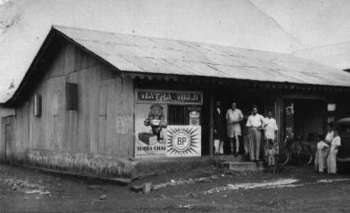
MONTREAL – Canada: Portuguese explorer Vasco da Gama visited many areas of Africa during his voyage of expedition in 1498.
Mombasa, Malindi, Dar es Salaam and Zanzibar in East Africa and Mozambique were among places he visited and explored.
It is almost certain there were Ismailis among the Muslims who traded in rice, sesame seeds, oil, cotton, wool, animal hide and other things.
Islam was brought to the East African coast by explorers and traders from the Arab peninsula and Muslim civilization began to flourish.
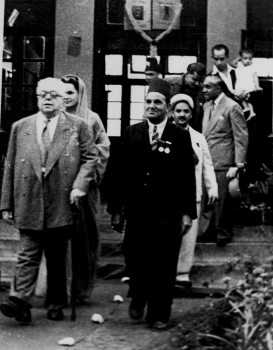
Ismailis from Sindh, Kutch, Kathiawar and other parts of Gujarat left the Indian sub continent following the severe drought of 1799.
Their primary objective was to seek employment opportunities and better prospects for their children.
Ismailis, who were given freedom of religion and protection, initially settled in coastal area and gradually started moving to the hinterland in Tanzania and started establishing places of worship.
There is no credible record of early Ismaili settlement particularly in northern Tanzania (then Tanganyika) because our ancestors did not write much and often signed their names with their thumbs.
Sir Sultan Mohamed Shah, grandfather of the present Imam, played a pivotal role in encouraging Ismailis to seek better economic opportunities when the scramble for Africa was on.
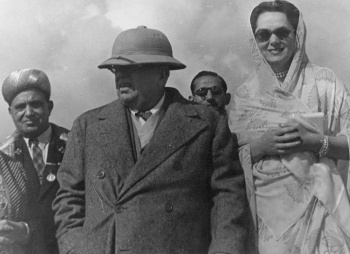
No one is sure who the first Ismaili to settle in Moshi before Tanganyika switched from being under German rule to British.
However, it is it is widely known and accepted that Joherali Jamal, with a few other Indians, was already doing business in Moshi during the German rule.
Initially the Indians were suspected of being German spies but once when they were cleared of all allegations, they were awarded land.
Jamal lived in a corrugated iron home which he converted into a double storey building on Mawenzi Road.
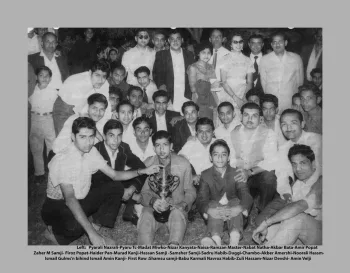
“My father, accompanied by grandparents, came to Africa in 1906,” recalls Jimmy Moolji. “He was only 11 years old.”
The Moolji Nazarali family was among other pioneers.
His father’s elder brother, Alibhai Nazarali came to East Africa a little earlier and settled at a place called Sultan Hamud near Eldoret in Kenya. His mission was to pave way for settling the rest of family members.
Moolji (Jimmy) also recalls as school was not an option, his father started hawking food prepared by his grandmother.
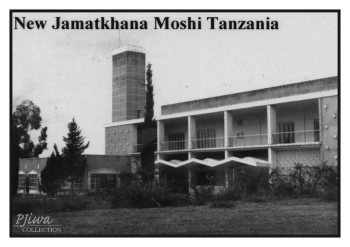
A few years later his father was betrothed to his mother who was born in Dar es Salaam but had become orphans and lived with close relatives in Voi not too far from Moshi.
He eventually moved to Voi and started working in the sisal estate with his in-laws.
The Moolji family made a fortune in business and later decided to return to Moshi with his small family at the time the Ismaili population was on the rapid rise. Jimmy (Moolji) said his father and others built the town’s first Jamat Khana at a cost of 25,000 shillings.
The fund raising campaign was not going well because of hard times.
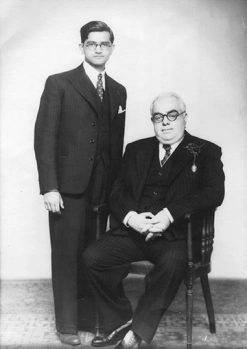
This was when the Moolji family decided to pay for the entire cost for the Jamat Khana and later built a library, a guest house and a nursery school.
Moolji died in 1936 and to honour his memory and legacy, a clock tower was built in a traffic circle which is still in existence today.
He was also instrumental in building the Aga Khan Primary School.
The distinguished Natha Hirji family migrated to East Africa around 1910.
Mahmoud Hirji, son of late Kasamali Hirji, the former president of Aga Khan Council in Moshi, provided some information for the early settlement. He made it clear most of the information is based on hearsay and anecdotes.
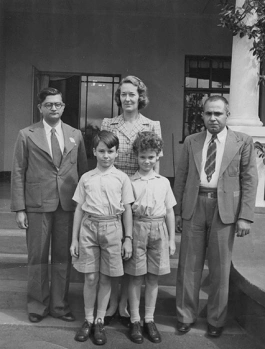
“I cannot corroborate any of it,” he stressed.
Natha Hirji moved to East Africa around 1910 as a young man and first landed in Mombasa where he, like many new immigrants, found employment within the Allidina Visram empire.
In 1912, Hirji and a four other Ismailis, travelled inland to Moshi seek their fortunes and settle there.
Of the five Ismaili pioneers, two of them quickly established themselves as successful businessmen and leaders of the community.
It is not known who the other three were.
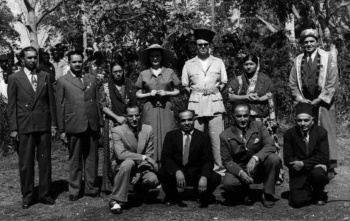
They were the Hirji and Nazarali (Moolji) families and assisted many Ismailis to settle in the town or to learn business dealings from them and eventually moved to Nairobi, Kampala and the Congo.
When the first World War broke out in 1914, Hirji and other Ismaili families returned to India and only returned at end of the war.
The Hirji family began to establish a dynasty. Hirji established a sole distributorship with the British American Tobacco (BAT).
Due to his legendary honesty and ethics, Hirji refused to market tobacco in the black market due to universal shortages, and resisted the chance and opportunity to become an overnight millionaire.
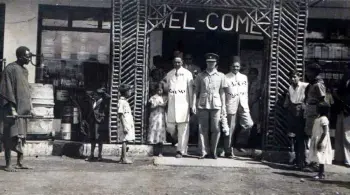
A group of Brits tried to wrestle the BAT distributorship away from the family, complaining to the government about “Indians” being allowed the distributorship.
The frustrated and unhappy Brits eventually lost because BAT recognized the integrity and of the Hirjis.
Several other attempts by the British rednecks also failed.
One was to buy inferior South African brand tobacco and attempting to boycott the “Indians.”
The Brits were once again openly buying cigarettes and other tobacco products from the Hirji family and could not stand the the South African products marketing under the brand name of upstarts.
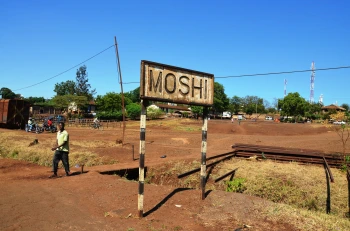
This company admitted defeat, packed up and left Moshi.
“This is a sweet story of honesty triumphing against the forces of racism and evil,” Hirji (Mahmoud) said. “This is what I remember from stories told to us.”
The Hirji family, apart from BAT distributorship, also operated other businesses in Moshi and neighbouring Arusha, including Coca Cola Bottling, Unga Limited, Brooke Bond Tea as well as Plaza and Palladium cinemas.
The late Mohamedali Natha Hirji was nominated and appointed Member of Parliament by the Tanganyika African National Union (TANU) soon after independence.
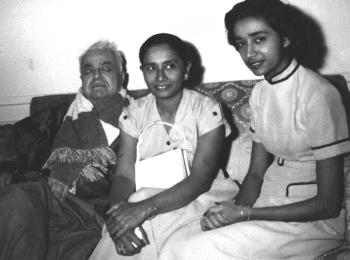
He also served as the deputy mayor of Moshi.
Information is hard to get details on other families that left a mark on Moshi.
Another well known family was Hasham Jessa.
My grandfather was born in Jamkandana near Junagadh in Gujarat in 1898. Accompanied by his wife Sambai (Virji Amershi), he moved to Moshi from Mombasa and set up a duka (shop) at Himo.
He later started a bee-keeping and honey business and gradually expanded his mushrooming business empire to include a cattle and fruit farm in Ngare Nairobi and constructed a multi-storey building – Tanganyika House – opposite the Kilimanjaro Native Co-operative Union.
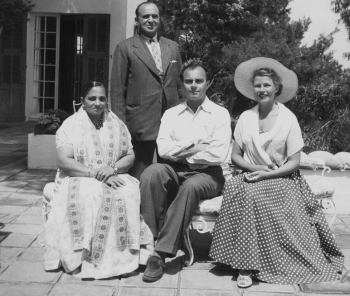
Jessa was a shrewd businessman who sold fruits, mainly oranges and tangerine and vegetables from his farm in west Kilimanjaro to Nairobi.
Behind this successful man was his wife Sambai, who despite having limited education, was a real power house in negotiating lucrative deals with banks and businesses.
Other families whose names cropped up in discussions with former Moshi residents include Hassanali Valji Kassam, Kasamali Jamal Habib, Hassanali Charania, Gulamsein Jiwa, Merali Hirji, Gulamsein Hasham Lalani, Hassanali Kassam Virani, Alibhai Amersi, Popat Rajan, Nurmohamed Dadani, Kurji Kanji, Nazarali walji, Kanji Raattansi, Habib Hirji, Devsi Kassam, Pyarali Kachra, Ramzan Bundali and many, many more.
When Moshi was enjoying a boom time, it was the headquarters of northern Taanzania’s Ismaili council and more than 1,500 Ismailis lived there.
Today, the Ismaili population has dwindled to less than 50.
Moshi, meaning smoke in Swahili, obtained its name from smoke wisps still visible and emitting from the near-extinct crater of Mount Kilimanjaro, the 19,340-foot mountain.
























Ismaili settlement in East Africa,Tanzania,Kenya, Uganda ,Congo etc.started after Maulana Hassanalishah’s fimans arround 1880-1890.They settled mainly in Zanzibar, Bagamoyo and other coastal areas.They moved inland from there.
LikeLike
I attended Agakhan Nursery and Primary School moshi from 1960 to 1970 my father Vasram Layman Parmar tailor had many Ismaili friends and I was one of the minority to be admitted. I have precious memories etched indelible for ever.
It would be nice to connect with past friends.
LikeLiked by 1 person
It would be great if names were mentioned after verification.
This is amazing. I loved reading the history.
LikeLike
I knew Hassanali Virani. As I remember he was heavily involved in building that town/city. He was the first non white mayor, first MP appointed by the British, first E Africa Chamber of Commerce Chair, represented the country at the house of lords in London etc and certainly first in the community through years and years of contribution including building of the new JK and school! He was part of the history of Moshi.
Shariffa
LikeLike
Thank you Sultan for capturing these memories.
The group picture has so many family members and friends.
My grandfather Count Hasham Jamal, count Hassanali Virani, Sir Eboo, count Fatehali Dhalla, Count Paroo, Goolam Keshavjee, Vargas Alibhai Kassim- Lakha. AG Abduhussein, Count Jindani, Merali Ramji.
Memories of the part they played in the history of the Jamat.
Shariffa
LikeLike
Great to find this information on Moshi Ismailis! From 1962-1964 I was a pupil at Mawenzi Secondary School and was in touch with many of my Ismaili classmates: Dhadanis, Amlanis, Shivjis, Viranis, Hirjis, Samjis, Rajans, Lalanis and we used to shop at Mooljis and Aladinas. We came to each other’s homes regularly, they were good times. Anyone who has memories of these halcyon days please contact me. Warm regards, Martijn Kaal
LikeLike
May Sultan Jessa’s soul rest in peace!
What a lovely memory he worked on for us
My Father Sadruddin Harjee and Mum Shirin Harjee lived in Kiyungi/ Karanga. My sisiter Yasmin now Yasmin Bandali, brother Karim Harjee and myslef attended AgaKhan Nursey and Primary Schools. We then attended Mawenzi and later I went to Tabora Girls School ( 1969), Then Karachi Grammar School in Pakistan( 72/73) and Pahlavi University for college ( 73 to 78) and part Med School ultimately graduating from Emory . I knew the Waljis, Samjis, Kurjis, Jessas, Hirjis, Mooljis, Kassams and Bandalis. Moshi Jamaat was among the most Philanthropic and caring.. my recall. I lived with Huzur Mukhi Kassamali Jamal’s family and had an amazing experience learning to cook with Gulsakar bai but the treat was she taught me many ginans … Buj Nirinjan, Anant Akado, Kalame Mowla, See Harfi and Saloko Moto and nao and many many more May all their souls rest in peace.
LikeLike
Yes, Gulsakarbai was the one who taught ginans in jk and is the reason I can sing ginans today. May their souls rest in peace!
LikeLike